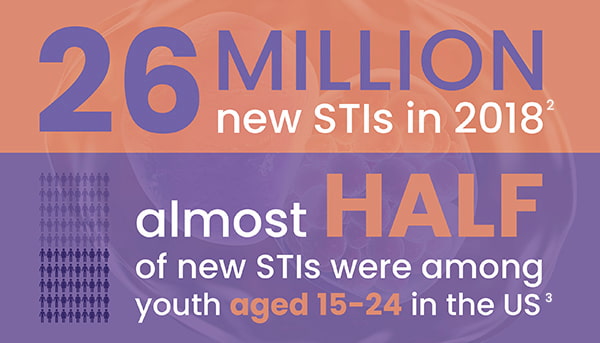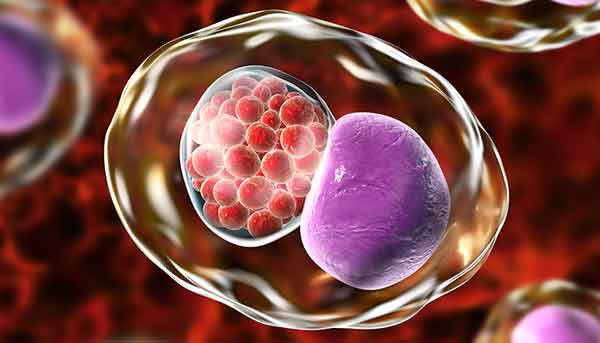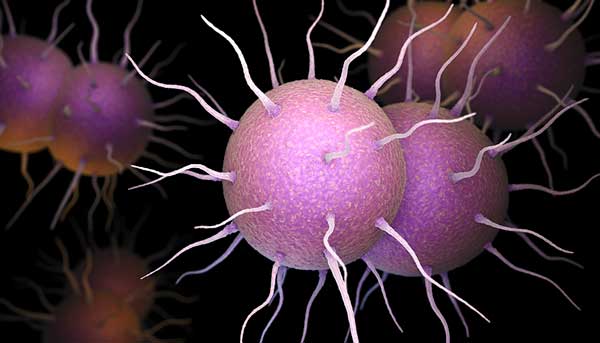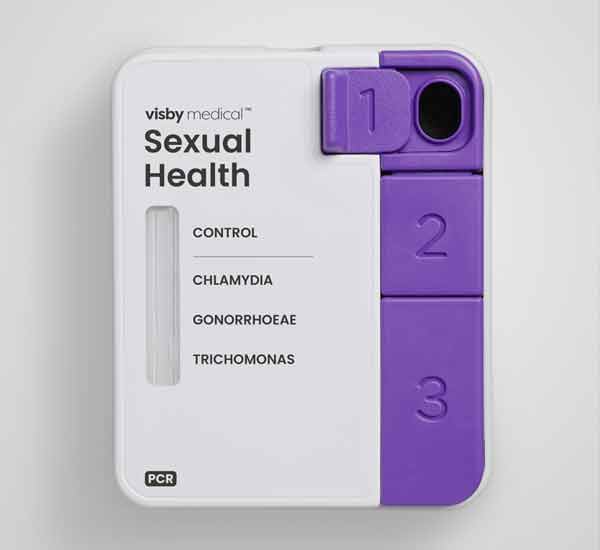Sexually transmitted infections (STIs) are common, and early treatment is important. STIs are any infection transmitted by having sex. Untreated infections can linger long term and cause other health problems, such as HIV or infertility.
Early treatment prevents spreading the infection to others. If you are sexually active, it is important to get tested regularly at your healthcare provider, an urgent care, or other local clinic that specializes in treating these infections. Testing is the only way to know for sure if you have an STI. These infections may not cause any symptoms making it easy to pass the infection to another person without your knowing it. The following factors increase your risk of getting an STI1:
- Having anal, vaginal, or oral sex without a condom
- Having multiple sex partners
- Having anonymous sex partners
- Having sex while under the influence of drugs or alcohol can lower inhibitions and result in greater sexual risk taking1
This post reviews how often STIs occur, common STI infections, the advantages of early and frequent testing, reasons people may not get tested even though they should, and a new test that accurately diagnoses these infections during an office visit.
How often do people get a sexually transmitted infection?
According to the Centers for Disease Control and Prevention (CDC), there were 26 million new cases of STIs in 2018 in the United States (US)2. The CDC estimates that half of all new infections occur among young people aged 15-24 years.3 Nationwide, 27.4% of high school students reported being sexually active, while condom use at last sexual intercourse was 54.3%.4

In 2018, 1 in 5 people had an STI for a total of 68 million infections.2 Chlamydia is the most common STI in the US today with around 1.8 million new cases each year, and gonorrhea follows with just over 600,000 new cases annually5. The CDC recommends regular chlamydia and gonorrhea screening for all sexually active young adults under age 25 years6. However, if you are sexually active without a committed partner, then you should have regular screening regardless of age.
What are the most common sexually transmitted infections?
As previously noted, the most common notifiable STI in the US is chlamydia5. Other common STIs include gonorrhea, trichomoniasis, and human papilloma virus. There are additional STIs, such as herpes simplex virus, HIV/AIDS, and hepatitis, but they are not covered in this post.
Chlamydia

Chlamydia is a bacterial infection caused by the bacteria, Chlamydia trachomatis, that affects sexually active women and men and is widespread. It can be transmitted through oral, vaginal, or anal sex. Chlamydia can cause the following symptoms7:
In women:
- An unusual discharge
- Burning when peeing
- Abdominal pain
In men:
- Discharge from the penis
- Burning when peeing
- Pain and swelling in one or both testicles
However, most of the time, chlamydia infections do not cause any symptoms, which makes it easy to pass on to a sex partner. Many women have no idea they are infected until they develop a complication from the infection, such as pelvic inflammatory disease (infection of the uterus and fallopian tubes), an ectopic pregnancy (pregnancy in the fallopian tube), or infertility (inability to get pregnant)7.
Chlamydia can be cured by taking antibiotics as prescribed by your healthcare provider. If diagnosed with a chlamydia infection, it is important to take all prescribed medication and avoid any sex until treatment is complete. Inform any sex partners, so they can be treated. Because you can get a repeat infection with chlamydia, the CDC recommends a chlamydia test 3 months after treatment7.
Gonorrhea

Gonorrhea is a bacterial infection caused by the bacteria Neisseria gonorrhoeae. It affects sexually active men and women. It can cause infection in the throat, rectum, vagina, uterus, and penis. It is transmitted by oral, vaginal, and anal sex. Gonorrhea can cause the following symptoms8:
In women:
- Pain or burning when peeing (urinating)
- Vaginal discharge
- Bleeding between periods
In men:
- Pain or burning when peeing (urinating)
- Discharge from the penis that is white, yellow, or green
- Painful or swollen testicles (not common)
Gonorrhea may not cause symptoms, which makes it easy to pass to a sex partner. If not treated, it can spread to the uterus and fallopian tubes in women causing infertility, pelvic inflammatory disease, ectopic pregnancy, and chronic abdominal pain. It can cause infertility in men as well. It can also cause bone and joint infections though this is rare8.
Gonorrhea can be cured with antibiotics. It is important to take all medication your healthcare provider prescribes and avoid any sex until treatment is complete. Inform any sex partners so they can be treated. There are strains of N. gonorrhoeae that are resistant to certain antibiotics. If symptoms continue despite taking all your medication, follow up with your healthcare provider8.
Trichomoniasis

Trichomoniasis is an STI caused by the parasite, Trichomonas vaginalis, also known as “trich.” Up to 70% of people have no symptoms according to the CDC9. It affects sexually active men and women. It can infect the vulva (outside the vagina), the vagina, the cervix, or urethra (the tube urine passes through). It infects the urethra inside the penis in men. Trichomoniasis can cause the following symptoms9:
In women:
- Burning, itching, or soreness in and around the vagina
- Discomfort with peeing
- Vaginal discharge that is clear, white, yellow, or green with a fishy odor
In men:
- Itching or irritation in and around the penis
- Burning at the end of peeing
- Pain with ejaculation
- Discharge from the penis
Trichomonas may not cause any symptoms. If untreated, any sexual activity can become difficult and unpleasant. It can also make it easier to get HIV9. Trichomoniasis can cause premature delivery and low birth weight babies in pregnant women9.
Trichomoniasis (trich) can be cured with antibiotics. It is important to take all medication your healthcare provider prescribes and avoid any sex until treatment is complete. Inform any sex partners, so they can be treated. Because you can get a repeat infection with trichomonas, the CDC recommends a trichomonas test 3 months after treatment9.
Human Papillomavirus
Human papillomavirus (HPV) is a viral infection that is common, easily transmitted, and often has no symptoms. According to the CDC, about 43 million people in the US were infected by HPV in 201810. There are more than 150 different types of HPV; about 40 of these can affect the genital area as well as the mouth and throat11.
HPV is transmitted by oral, vaginal, or anal sex or by skin to skin contact during sex. Most infected persons can clear the infection on their own in 2 years. However, HPV infection can cause warts on the penis and vagina or in other areas on the genitals. The warts can look like a cauliflower or be flat, large, or small. There can be groups of small bumps. A healthcare provider can diagnose HPV by examining the area.
HPV can go on to cause cancer of the cervix, vagina, vulva, penis, and anus. It can cause throat, tongue, and tonsillar cancers from infection by oral sex. These cancers can take years to develop from a previous HPV infection. Routine Pap smears are important for sexually active women because cervical precancers can be found and treated before cancer can develop.
There are no antiviral medications for HPV. However, the warts caused by HPV can be treated by topical medication or other methods. HPV is best avoided by practicing safe sex, using condoms every time, and by vaccination. Vaccination is recommended for children starting at ages 11 or 12 and for anyone unvaccinated up to age 26 years10. People ages 27 to 45 years can also get vaccinated but should discuss their risk for HPV infection with their healthcare provider to determine if vaccination is right for them10.
Why should you get tested early and often for an STI?
Early testing for STIs allows for the following:
- Early treatment
- Prevents infection spread
- Avoids later complications
The STIs chlamydia, gonorrhea, and trichomoniasis may not cause any symptoms. Frequent and early testing helps identify these silent infections before they cause complications. Early treatment with antibiotics can shorten treatment time and rapidly decrease symptoms if present.
Knowing you have an STI allows you to tell your sex partner, so they can be treated and helps prevent further spread of the infection. While discovering you have an STI can be embarrassing and emotional, treatment can provide peace of mind to you and your sex partner.
Why won’t people get tested for sexually transmitted infections?

People do not get tested for STIs because they think that the infection will go away without treatment. These infections often cause no symptoms, which often delays diagnosis and treatment. Other reasons for choosing to avoid testing for an STI include the following:
- Embarrassment over sexual behavior
- Past negative experience at a healthcare provider office or sexual health clinic
- Worry about confidentiality
- Fear of social stigma or damage to reputation
- Fear of the cost associated with testing and treatment
In addition, the results for an STI test may take up to 2 weeks to receive. If the person is impatient or is unable to follow up, treatment is delayed. However, none of these reasons should prevent you from getting routine screening for STIs if you are sexually active without a committed partner.
What is the best testing solution for sexually transmitted infections?
We have explored the scope of the problem, common STIs, the reasons for early and often STI screening, and the reasons people may not choose to test. What remedy is available to make testing and treatment easier?
Visby Medical has produced a point of care device for STIs that can make testing and getting test results easier. Visby Medical’s sexual health testing device offers a simple alternative to traditional STI testing that delivers an accurate test result for chlamydia, gonorrhea, and trichomonas within 28 minutes. This means a person can be diagnosed and prescribed treatment at the same office visit, rather than waiting days or weeks for the test result. In addition, the healthcare provider can discuss any concerns the patient may have while they are still in the provider’s office.
Because of its unique design and ease of use, Visby Medical’s FDA-cleared point of care test can be used in any clinic or doctor’s office, which makes it a valuable asset to the medical community.

The Visby Medical Sexual Health Click Test offers the following benefits:
- Fast results in just 28 minutes
- Clinic friendly, no extra equipment or training required
- Lab-quality, PCR results without leaving the office or “sending out”
This new, cutting-edge approach to STI testing makes it easy for anyone to get the quality care they deserve without having to wait or put off their health concerns. With its ease of use, discretion, and the elimination of test result wait time, it offers unprecedented convenience and privacy when it comes to STI testing and treatment.
In Summary
STIs are on the rise in the US and often go undetected because there are no symptoms associated with the infection. As a result, millions of people become infected yearly. Lack of treatment can cause major health problems.
Early detection is key to treating any STI successfully. Early detection and treatment reduce the spread of STIs to others and risk of complications.
A point of care STI testing device, such as the Visby Medical Sexual Health Click Test, allows healthcare providers the opportunity to give a more comprehensive level of care because patients can be diagnosed, treated, and any questions and concerns addressed within the same visit.
References
- https://www.cdc.gov/std/hiv/stdfact-std-hiv-detailed.htm
- https://www.cdc.gov/std/statistics/prevalence-incidence-cost-2020.htm
- https://www.cdc.gov/std/life-stages-populations/adolescents-youngadults.htm
- https://www.cdc.gov/mmwr/volumes/69/su/su6901a2.htm
- https://www.cdc.gov/std/statistics/2019/overview.htm
- https://www.cdc.gov/std/treatment-guidelines/screening-recommendations.htm
- https://www.cdc.gov/std/chlamydia/stdfact-chlamydia.htm
- https://www.cdc.gov/std/gonorrhea/stdfact-gonorrhea.htm
- https://www.cdc.gov/std/trichomonas/stdfact-trichomoniasis.htm
- https://www.cdc.gov/std/hpv/stdfact-hpv.htm
- https://www.cdc.gov/std/treatment-guidelines/hpv.htm
All photos are stock photos, used for illustrative purposes only. Posed by models.

